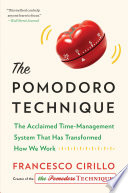

The Pomodoro Technique emphasizes the importance of effective time management as a core principle for productivity. By breaking work into intervals, traditionally 25 minutes long, separated by short breaks, individuals can maintain focus and energy throughout their tasks. This method allows for better planning and prioritization of tasks, as users can assess how many 'Pomodoros' (work intervals) are needed for each task. By quantifying work in this way, individuals can also track their productivity over time, leading to improved self-awareness and efficiency.
Continue readingOne of the central tenets of the Pomodoro Technique is the enhancement of focus and concentration. By committing to work for a set period without interruption, users can achieve a deeper level of engagement with their tasks. This method discourages multitasking, which often leads to decreased productivity and increased stress. Instead, by dedicating each Pomodoro to a single task, users can experience a flow state, where they become fully immersed in their work, leading to higher quality outcomes and a greater sense of accomplishment.
Continue readingThe technique incorporates regular breaks, which are essential for maintaining productivity over longer periods. After each Pomodoro, users take a short break, typically 5 minutes, allowing their minds to rest and recharge. After completing four Pomodoros, a longer break of 15-30 minutes is recommended. These breaks are crucial as they help prevent burnout, reduce mental fatigue, and enhance overall well-being. By recognizing the need for rest, the Pomodoro Technique promotes a sustainable work ethic that balances effort with recuperation.
Continue readingThe Pomodoro Technique encourages users to prioritize their tasks effectively. Before starting, individuals are advised to create a to-do list and identify the most critical tasks to complete. This prioritization process helps users focus on what truly matters, ensuring that they allocate their Pomodoros to high-impact activities. By consistently evaluating and adjusting their priorities, users can enhance their productivity and ensure that they are making progress towards their goals.
Continue readingTracking progress is a vital component of the Pomodoro Technique. Users are encouraged to record each completed Pomodoro, which provides valuable insights into their productivity patterns. This tracking can reveal how long certain tasks take, helping individuals better estimate future work and allocate their time more effectively. Additionally, reviewing completed Pomodoros can boost motivation and provide a sense of accomplishment, reinforcing positive work habits.
Continue readingWhile the Pomodoro Technique provides a structured approach to time management, it also allows for flexibility and adaptability. Users can adjust the length of their Pomodoros and breaks based on their personal preferences and the nature of their work. This adaptability ensures that the technique can cater to a wide range of working styles and environments, making it accessible to various individuals, from students to professionals. By personalizing the method, users can find a rhythm that maximizes their productivity.
Continue readingThe Pomodoro Technique promotes mindfulness and presence in work. By focusing on one task at a time and being fully engaged during each Pomodoro, individuals can cultivate a greater awareness of their work habits and mental state. This mindfulness can lead to improved decision-making, creativity, and problem-solving abilities. Additionally, being present in one’s work fosters a greater appreciation for the process, reducing anxiety about deadlines and outcomes.
Continue reading